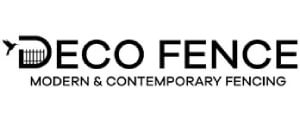What to Expect When Removing Your Chain Link Fence
Removing a chain link fence might seem like a straightforward task, but it involves several important steps. Whether you’re doing it yourself or hiring professionals, understanding the process can save you time and hassle. This guide provides insights into what you should know before taking down your fence, including necessary tools and considerations for disposal. We’ll also discuss potential challenges and how to overcome them, ensuring that the job is done efficiently and safely.
Tools You Will Need
Before beginning the task of removing your chain link fence, gather all necessary tools. This will streamline the process and prevent unnecessary delays. Essential tools include wire cutters, wrenches, and gloves. A sturdy pair of pliers can help with stubborn links. Having a sledgehammer might be useful for dislodging posts embedded in concrete.
Initial Steps to Begin
The first step in the chain link fence removal process is to disconnect the ties holding the mesh to the posts. Carefully unhook each tie to avoid damaging the mesh if you plan to reuse it. Next, use wire cutters to cut through any connections binding the mesh to the framework. Roll up the mesh neatly for easy disposal or storage.
Post Removal Techniques
Once the mesh is removed, focus on taking out the fence posts. If your posts are set in concrete, you’ll need additional effort. Dig around the base of each post with a shovel, loosening the soil to create space for movement. For posts not set in concrete, loosen them with a sledgehammer and pull them out using physical strength.
Safety Measures to Follow
Safety should always be a priority when performing any type of home improvement project. During chain link fence removal, wear protective gloves to prevent injuries from sharp wires. Safety goggles protect your eyes from flying debris. Always check your surroundings for hazards before starting work. Keep children and pets away from the area while you work.
Handling Disposal Properly
After completing the removal, proper disposal of materials is crucial. Many recycling centers accept metal fencing materials, which can reduce waste and promote sustainability. If you cannot transport the materials yourself, contact a local waste management service for collection options. Reuse any salvageable parts for future projects or donate them to community organizations that may find them useful.
Challenges You Might Face
Several challenges can arise during chain link fence removal. Posts stuck in rocky soil require extra effort and tools like pickaxes or crowbars. Rusted hardware makes disassembly harder; apply lubricants like WD-40 to ease their removal. Limited workspace calls for creative solutions, such as dismantling sections at a time.
Concluding Tips for Success
To ensure a smooth fence removal experience, consider these tips: Plan your approach by identifying obstacles early. Allocate sufficient time so you don’t rush through critical steps. Enlist help if needed; an extra set of hands makes tasks easier and safer. Following these suggestions ensures efficiency and safety throughout your project.
Your Trusted Partner for Fencing Needs
If you need further assistance or professional services for your fencing projects, reach out to us at (626) 249-3277. Our team at DFC Fencing offers expert guidance and support tailored to your specific needs. Based in Monterey Park, CA, we’re dedicated to delivering exceptional quality and customer satisfaction every time.

